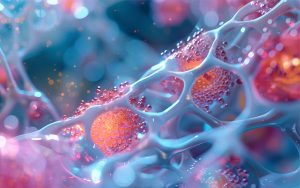
@pprothien Adobestock
Magnetically controlled on-demand drug release from biodegradable scaffolds for life-changing therapies.
Drug-eluting biodegradable medical devices that “vanish inside you after the job is done” are a radical innovation in regenerative medicine, cancer treatment and cardiovascular therapies. The goal of such devices is to ensure therapy at the right place, at the right time and with the right dose. The most prominent representatives are drug-eluting biodegradable vascular scaffolds, tubular implants that open blocked arteries and then gradually disintegrate into components that the body can metabolize excreting the drug. However, so far there is no real breakthrough. Previous biodegradable scaffold design and application attempts struggled because, at this time, no technology is able to cope with the influence of scaffold alterations with degradation in vivo. Once the drug kinetics have been set, they cannot be modified or controlled after implantation. This leads to drugs being released too early or too late, or in amounts that are either too small or too large. All these factors reduce the effectiveness of therapy and may even cause harm to patients. To overcome this challenge, research efforts recently focused on the development of smart, stimuli-responsive biodegradable medical devices, i.e. scaffolds and nano-carriers, to perform more targeted drug release. Yet, even the most versatile device can only expand its potential with close in-vivo control, which is not feasible up to now. Remote-control of material properties in vivo is the grand challenge to solve.
MAD Control makes this possible by establishing a multifunctional platform for biodegradable scaffolds comprising innovative material design and model-based predictions of degradation states from real-time imaging that (i) reveal which actuation is best for targeted drug release in the actual degradation state, and (ii) uncover how to generate this actuation.
The design includes magnetic nanoparticles in hybrid scaffold materials, tailored for a double function: sensors for magnetic particle imaging (MPI), and actuators for drug release with magnetic hyperthermia (MH). The imaging results are matched with degradation states based on prediction models, and magnetic actuation is induced in a multimodal device. Supported by cooperation partners, MAD Control pioneers a MPI-MH-based device to establish a powerful next-generation framework for magnetically controlled therapies.
Control is achieved by establishing measurement-based protocols. For this, a cutting-edge automated and comprehensive analytic system that allows continuous in-situ measurements under physiological conditions of the relevant hybrid materials’ properties is developed. The resulting material data streams are coupled with modelling and control algorithms.
Thus, the multifunctional platform promises a theranostic breakthrough: On-demand release of a precise amount of drugs that can be deliberately chosen. After extensive in-vitro testing, its meaningfulness is finally validated in vivo for a coronary stent application.
The outcome of this project is truly transformative, opening new possibilities for real-time theranostic technology at a molecular level. A new line of theranostic devices and automated control processes in material testing of biodegradable scaffolds are developed, tapping into new application opportunities of biodegradable hardware in tissue engineering and of nanomedicines in cancer therapy, thus contributing to the emerging area of personalized therapies.


